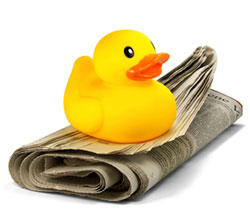Picture this scenario: You are global head of a sales force in the financial industry, confronted with the decision as to whom to promote to the next level. You’re feeling very ambivalent about one particular candidate: He has generated the highest revenues, been very successful in pitching for new business and contributed tremendously to the overall P&L.
However, the feedback you have been hearing for a long time is that this sales rep is not a team player at all: He doesn’t share information within the team nor with other departments and doesn’t help more junior sales people, although he has agreed to mentor them. Basically, he works by himself, almost in isolation. If you were to promote him, what signal would that send into the organization? How would this impact the energy in the team? What effect would any decision on his promotion have on you as his line manager?
Share your problem with a silent friend
Human interaction is – of course – the preferred method to help you get unstuck with any dilemma. However, if you prefer to tackle such problems alone, or nobody is available to bounce your problem off, then what do you do? The answer: Tell your rubber duck!
The rubber duck represents, in the worst case, any inanimate object, and in the best case, a silent friend, and is a particularly useful method for getting to the crux of a problem and working out how you feel about it.

Tell your rubber duck the challenge you face. Explain the situation in detail. Show your rubber duck your emotions. Describe how the problem makes you feel. As you talk to your rubber duck, chances are you will find that an idea or solution comes to mind…
Presuming you find somebody human to listen to your problem, ask him or her to remain silent and just be an active listener. It doesn’t need to be anyone who knows about the situation. In fact, it can actually be more beneficial if they don’t. The idea is that you solve the problem, not them. Ask the person simply to listen, nod occasionally and make encouraging sounds, but not to offer any comments or try to find solutions. The aim is for you to hit upon the best solution for yourself.
How it works
Rubber ducking is a fast and analytical creativity technique used to solve problems; it helps you think the issue through in depth, structure your understanding and assess your feelings. Your partner – be it your rubber duck or a friend – listens without interrupting. Your thoughts flow and plant seeds in your brain for a potential solution while you get your head around the essence of the actual problem.
Rubber ducking also helps you to release negative energy. You subconsciously process your conflicting thoughts, take responsibility for the current challenge and hopefully come up with a few possible next steps.
Introverts benefit from rubber ducking (using their rubber ducks!) in that they are able to address a pressing issue in a secure and private environment. Extroverts like this method because the rubber duck won’t answer back!
One final piece of advice: You might want to consider replacing your rubber duck with an experienced and qualified Executive Coach who can support you in minimizing future rubber duck moments.
Curious to find out more? Contact me to find out if coaching is right for you.
